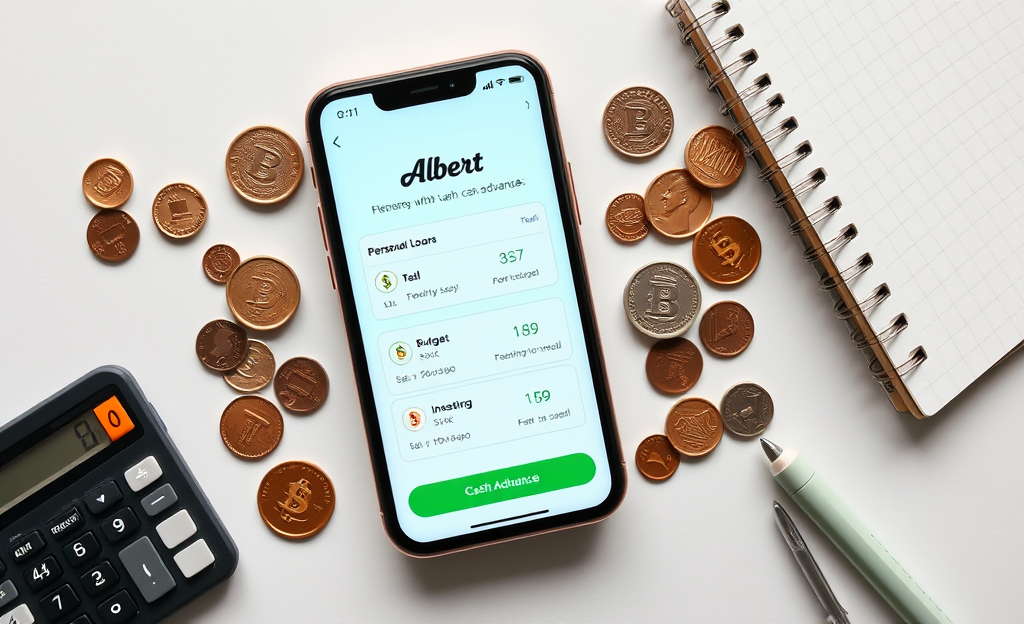![]()
![]()
![]()
![]()
Credit Without Bureaucracy Made Simple
Alternative Lending practices have emerged as a vital solution for those excluded from traditional credit systems.
As millions lack a formal credit history, lenders are turning to innovative methods that leverage non-traditional data to evaluate borrowers’ creditworthiness.
What type of loan do you need?
Get cash to renovate your home
Find quick cash for your needs
Take control of your finances today
Access personal loans for your dreams
This article will explore how these alternative lending practices not only bypass conventional credit scoring but also offer significant opportunities for the credit invisible, ultimately simplifying the lending process while reducing dependence on outdated bureaucratic systems.
Understanding this shift is crucial for both borrowers and lenders in today’s financial landscape.
Fast-Track Lending Essentials
Streamlined lending redefines how individuals and businesses access credit by removing traditional layers of bureaucracy such as extensive paperwork, long verification procedures, and rigid credit evaluations.
Instead of relying on outdated models, this approach leverages technology and automation to assess risk more dynamically, often incorporating alternative data sources like utility payments and online transactions.
As a result, borrowers experience enhanced accessibility to funds, especially those invisible to credit bureaus or underserved by major financial institutions.
Eliminating red tape is not simply about speed—it enables broader financial inclusion and reduces overhead for lenders.
Without manual processes, institutions minimize human error and unlock operational efficiency, simultaneously offering a superior borrower experience.
Platforms such as those featured in top alternative lending networks showcase how streamlined applications and soft credit checks open fast financing routes to millions.
- Faster approvals cut wait-times dramatically
- Reduced documentation simplifies loan access
- Lower operational costs boost lender efficiency
Using Alternative Data Streams
Lenders increasingly depend on alternative data streams to evaluate creditworthiness for those without traditional histories.
Utility and rent payments, for example, reveal steady financial responsibility over time, indicating reliability.
E-commerce behavior—such as consistent purchase patterns and prompt payments—offers deeper insight into spending habits.
Insightful lenders also analyze mobile and digital footprints to uncover financial discipline via app usage and online behavior.
These data types offer predictive power often missing from standard reports, empowering better-informed credit decisions.
| Utility payments | Shows consistency |
| Rent history | Indicates long-term financial reliability |
| E-commerce transactions | Reveals spending discipline |
| Digital footprint activity | Helps gauge online financial habits |
By integrating these sources, lenders widen access to credit for millions of people previously excluded due to limited conventional data.
Hybrid Creditworthiness Models
Lenders are increasingly adopting hybrid creditworthiness models that merge traditional FICO scoring with alternative metrics to achieve more inclusive and accurate lending decisions.
While conventional credit scores reflect longstanding behaviors like repayment history and credit utilization, they often miss out on millions who are credit-invisible.
This gap is now bridged by integrating relevant non-traditional data such as utility payments, rental history, and even mobile phone records.
Platforms like Plaid’s lending data services provide these real-time financial insights, enabling lenders to evaluate consumers beyond the three major bureaus.
Through machine-learning scoring, lenders fine-tune their credit risk models by combining traditional variables with behavioral indicators.
For instance, a borrower with limited credit history might still achieve a predictive score of 724 when positive patterns in rent and savings activity are considered.
According to FICO’s analytics platform, this hybrid approach allows institutions to balance speed and accuracy in underwriting while maintaining a restrained risk profile.
These enhancements not only reduce biases but also improve financial inclusion for underserved consumers.
As the ecosystem evolves, integrating traditional and alternative data will become essential to sustainable lending practices.
Automated Approval Technologies
AI underwriting revolutionizes lending by seamlessly blending multiple automation layers—from document recognition tools that extract and validate data to smart rule engines that evaluate eligibility in real-time.
By instantly verifying identity and cross-referencing financial behavior across thousands of variables, systems like FundMore.ai cut manual review errors and human delays.
With machine learning models identifying patterns faster than traditional analysts, credit decisions can be issued in under a minute.
These API-driven solutions not only reduce operational friction but also create a more inclusive and accurate lending environment that scales securely and efficiently.
Regulatory Support for Streamlining
Regulatory sandboxes are transforming financial oversight by providing a controlled, experimental environment where fintech firms can test innovative products while temporarily bypassing some traditional regulatory constraints.
This approach enables digital lenders to develop faster, more inclusive systems without compromising compliance.
For instance, financial institutions can trial new decision-making algorithms or credit assessment platforms under regulatory supervision, reducing delays caused by outdated approval processes.
According to the Flagright sandbox overview, these frameworks help align innovation with regulatory expectations, promoting scalability while safeguarding consumers against systemic risks.
Additionally, open banking is streamlining digital lending by giving lenders authorized access to alternative financial data sources, such as transaction histories or spending patterns.
This enables real-time verification, drastically reducing manual documentation and wait times.
Backed by data-sharing rules, these systems ensure security while fostering competition and customer-centric innovation.
In many cases, financial regulators promote RegTech innovation to further modernize compliance functions through automation and risk monitoring.
With this dual approach—sandboxes and open banking—policymakers manage to encourage rapid technological deployment without sacrificing regulatory integrity.
Inclusive Financing Opportunities
Millions of credit-invisible individuals in the United States often face systemic barriers when trying to access financial services due to traditional credit scoring models.
Legacy institutions typically overlook financially responsible behaviors like timely rent payments or consistent mobile phone bills.
However, with firms leveraging alternative data scoring methods, many are now gaining access to funds once out of reach.
For example, undocumented micro-entrepreneurs running successful informal street vending businesses can now use their mobile sales records or online payment histories to prove financial stability—breaking free from outdated verification systems.
A single mother running a hair-braiding service from her home is no longer dependent on a traditional loan officer to recognize her creditworthiness.
With embedded fintech services becoming more intuitive, her digital payments and customer reviews can serve as proof of income and business viability.
This reduction in bureaucracy lowers barriers that previously excluded responsible and thriving community members simply due to a lack of conventional paperwork.
According to Vespia’s insights on alternative credit scores, these digital footprints provide a broader and more inclusive picture of individual finance.
Meanwhile, the gig economy is driving more people into non-standard income models where proof of income may not align with legacy bank expectations.
Fintech tools that streamline loan approvals through AI-based assessments help these workers secure lines of credit without exhaustive documentation processes.
This frictionless access means that ride-share drivers or freelance creatives no longer need co-signers or collateral to get funded.
It redefines what financial inclusion means by actively incorporating the lived realities of those often left behind by traditional measures.
In conclusion, the rise of alternative lending marks a transformative shift in the way creditworthiness is assessed, empowering countless individuals who previously faced barriers to borrowing.
Embracing these practices could lead to a more inclusive financial future.









